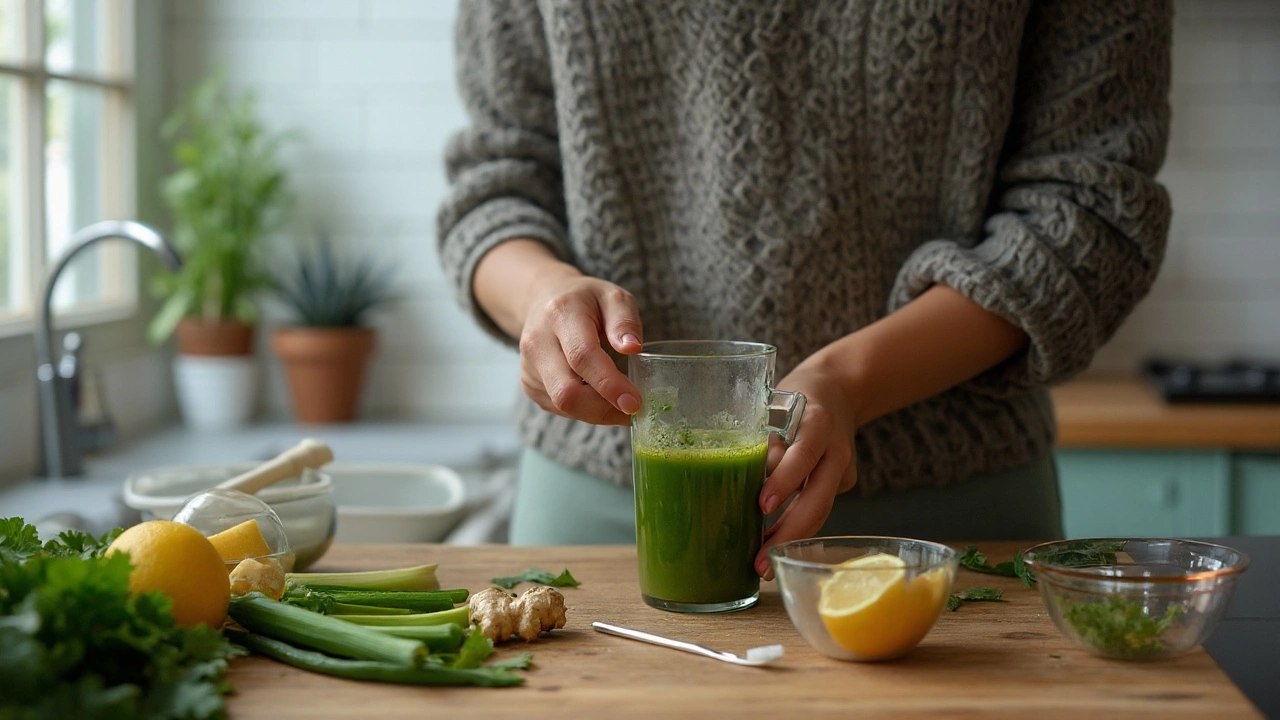Want a quick way to add vitamins and flavor to your day? Fresh juice is fast, tasty, and a great way to eat more fruits and veggies. Below you’ll find practical tips, simple recipes, and safety notes so your homemade juices actually help instead of hurting your day.
Choose a base: water-rich fruits like apples, pears, and oranges blend or juice easily and keep the flavor balanced. Add leafy greens—spinach or kale—for extra folate and potassium without a strong taste. Throw in a root like carrot or beet for beta-carotene and natural sweetness.
Watch the sugar: fruit juices can be high in sugar. Balance sweetness with veggies, a squeeze of lemon, or a small piece of ginger. If you’re watching blood sugar, favor green juices with one apple or half a banana instead of multiple sweet fruits.
Texture and digestion: if you use a blender, keep some fiber by blending whole fruits and adding a bit of water. If you use a juicer, save the pulp—mix it into smoothies, soups, or muffins so you don’t waste the fiber and nutrients.
1) Morning Green Boost (serves 1): 1 apple, 1 large handful spinach, 1/2 cucumber, 1/2 lemon, small piece of ginger. Juice or blend, add water to thin. Bright, low-sugar, and energizing.
2) Immunity Carrot-Orange (serves 1): 2 carrots, 1 orange, 1 small beet (optional), pinch of turmeric. Carrots and orange give vitamin C and beta-carotene. Turmeric adds a gentle anti-inflammatory kick.
3) Recovery Red (serves 1): 1 small beet, 1/2 cup strawberries, 1/2 apple, splash of lime. Good after workouts—beet supports circulation and strawberries add vitamin C.
Simple steps: wash produce, peel only when needed (citrus, pineapple), chop to fit your machine, and juice or blend. Taste and adjust: add water, lemon, or a tiny bit of honey if needed.
Storage and safety: fresh juice is best within 24–48 hours in a sealed container in the fridge. Fill the jar to the top to reduce air contact. For higher safety, drink within a day. Keep dental health in mind—rinse your mouth with water after drinking to protect enamel from acids and sugars.
Tools and shortcuts: you don’t need an expensive juicer. A blender plus a fine mesh strainer or nut milk bag works well. If you want pulp, skip straining. Frozen fruit can save time and chill your drink without ice.
Use pulp creatively: add it to oatmeal, mix into yogurt, or bake into savory fritters. That saves fiber and stretches groceries.
Make it a habit: prep a bag of chopped produce for 2–3 days so making juice takes minutes. Try one green and one fruit-forward recipe each week to keep variety and control sugar.
Ready to try? Start with the Morning Green Boost—it's forgiving, fast, and a good test of whether you prefer blended or cold-pressed style. Small steps beat big promises every time.

Discover seven vitamin‑rich juice recipes that boost immunity, energy, and digestion. Learn how to pick produce, avoid common juicing mistakes, and compare nutrient profiles for optimal health.
Read More
No-hype guide to health juice: what it can and can’t do, how much to drink, easy recipes, smart ratios, and safety tips to hit daily nutrients.
Read More